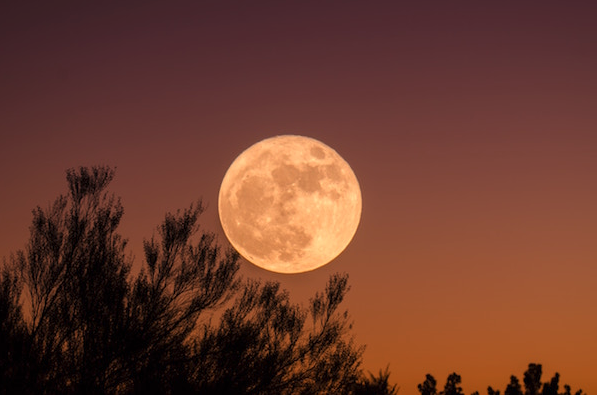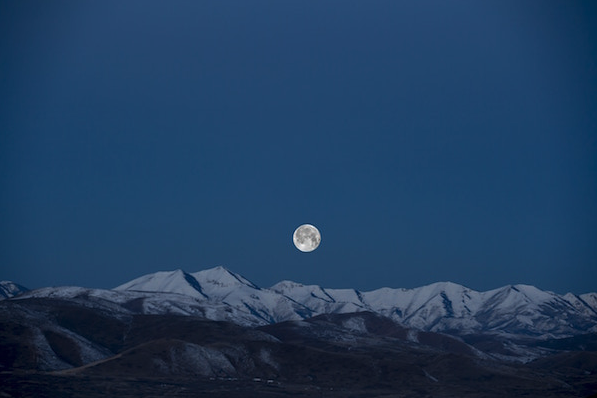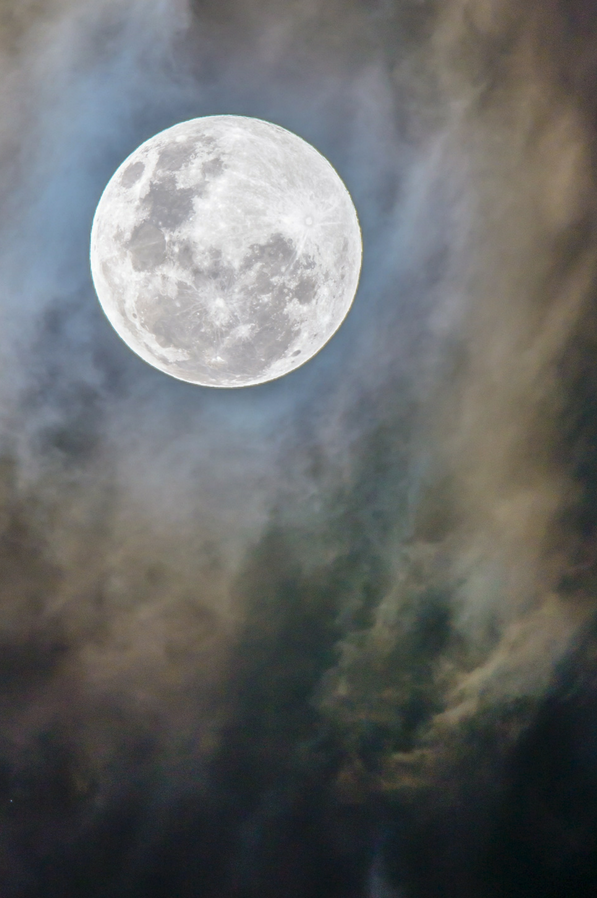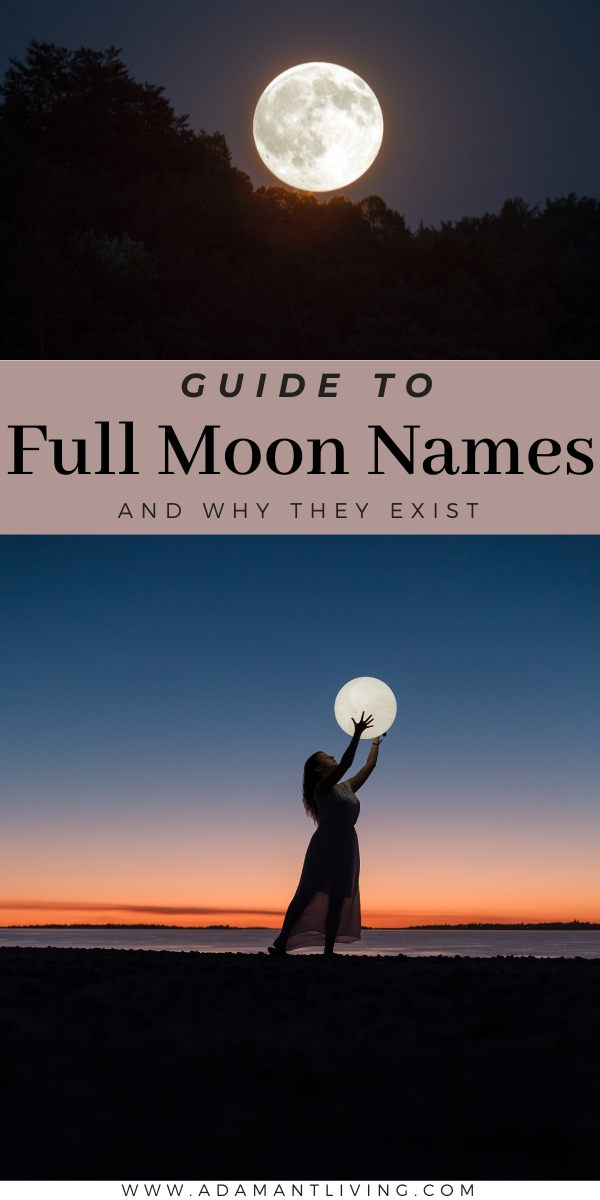In the past, our ancestors were keenly aware of the cycles of the earth and gave each full moon names to celebrate the season or the availability of food. Can honoring the moon help bring wellness and balance to modern life?

(This post was contributed by Melissa Keyser.)
In the past, our ancestors were keenly aware of the cycles of the earth. They celebrated the seasons and observing the moon was a regular practice.
But as we moved into our modern lives, and away from earth-based work, observing and celebrating these cycles became less important. We lit up our homes and our cities with artificial light, and the night sky faded away as a priority. All the conveniences of the modern day made the passing of seasons have little importance to our day-to-day life.
Despite loving nature, and thinking that tuned into the rhythms of the earth, I hadn’t actually thought very much about the moon. At any given time, I couldn’t tell you what phase it was in or when the next full moon was without looking at a calendar.
I wanted to know more about the moon, the ways of life that celebrated it, and how I could deepen my own connection with the moon.

Why there are full moon names for each month
We’ve all likely heard the fall moon called the “harvest moon”, but did you know that there are names for the other full moons, as well?
For millennia, the moon was used to mark time and to break the seasons down into smaller cycles. The full moons were used as a calendar to set schedules for hunting, planting, harvesting and to guide the ways of life. Cultures all over the world gave these full moons names.
Many full moon names are hard to find, as most are part of oral traditions from agrarian or nomadic people. The names reflected the behavior of the plants, animals, or weather during that moon cycle, but each culture had slightly different names that related to what they experienced in their area.
Many of the full moon names that are commonly found and used today have Native American, Anglo-Saxon, and Germanic roots.

Moon Cycles & Calendar Basics
The cycle from new moon to new moon is called lunation. Every month Earth’s moon goes through its phases, waning and waxing from new moon to full moon and back again. A lunation is the period of time it takes for the moon to orbit the earth.
The moon does not follow the Gregorian calendar, which is the calendar that we use today. The moon’s cycle goes through its lunation in a range of 29-30 days. The full moon occurs, on average, every 29.5 days as the moon moves to the side of Earth directly opposite the sun.
It is near impossible to sync the lunar calendar to our calendar. There are more than 12 lunations, but less than 13.
Many cultures used a lunar calendar that had 13 moons, one which was used every 3 years or so (like leap year- which, by the way, is my birthday. I’d love a pink pony). Some cultures, and what has been adopted by the Old Farmer’s Almanac and is most used today, used 12 moon names.
When a month had more than one full moon, it is called a blue moon. Some cultures would only use 12 moon names, and would repeat one of them, sharing the name of the previous cycle.
The new moon also doesn’t fall on the first of the month, making the start of a new lunation sometimes in the middle of a month or at the very end. I love the concept used in the ancient Mediterranean: the first sighting of the new crescent moon would be called out to the community, and a new month would begin. The word calendar actually comes from latin verb calare, to call out.

How Observing the Moon Can Help Our Wellbeing
For a long time, the moon had huge significance in the lives of humans. Yet other than the occasional ‘big event’ or posting a picture on Instagram, it seems our modern culture has disregarded the importance of the moon.
Not only were the full moons used to mark time, but it has been said that the phases of the moon can affect our sleep, energy and other aspects of our wellbeing (but, that’s a post for another day.)
I think the relationship we used to have with the moon should not be forgotten. Very few of us can use the moon as a calendar, to schedule daily life. Nor will we use the night sky to plan and guide our activities for that month.

Many of us can no longer see the stars and the constellations in our night sky because of light pollution, but everyone can still see the moon. And, we can still observe the cycles of the moon. We can learn how to tell what phase she is in and notice her subtle changes.
We can celebrate the foodstuff or events the full moon names were based on. Imagine eating food that is not only local, aligned with the seasons but also the moon! Such foods would be nourishing, not only to our body but also the soul!
By re-connecting with the moon, we can reconnect with the earth. We are not apart from nature, but a part of it. And that, I believe is essential to all our wellbeing.
I’m going to be starting a series exploring each of the moon names and how we can use these traditions in our modern lives. I’m excited to learn more!

Full Moon Names
These are all the full moon names, in order:
- Wolf Moon, Moon after Yule
- Blue Moon / Lenten Moon, Hunger Moon
- Worm Moon, Crow Moon
- Blue Moon/ Sugar Moon, Sap Moon
- Pink Moon, Egg Moon
- Flower Moon, Milk Moon
- Strawberry Moon, Mead Moon
- Buck Moon, Thunder Moon, Wort Moon
- Sturgeon Moon, Corn Moon
- Harvest Moon
- Hunter’s Moon, Blood Moon
- Beaver Moon, Frosty Moon, Snow Moon
- Cold Moon, Long Nights Moon, Moon Before Yule

Leave a Reply